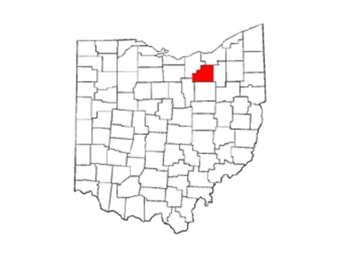On November 30, 2016, the Federal Energy Regulatory Commission, commonly known as FERC, approved a route for the Nexus Gas Transmission pipeline project that will take it 23.38 miles across Medina County.
The approved route will bring the Nexus pipeline into the northern part of the county to the south of State Route 57 in a southeast direction, exiting the county near Wadsworth. The pipeline will then cross into Wayne County near Rittman and Doylestown for 6.72 miles before continuing into Summit County. A compressor site is planned near Wadsworth.
Several grass-roots organizations had sprung up along the proposed pipeline route urging FERC to reject the project, or at least alter its route in such a way as to largely avoid Medina County and other heavily populated counties in Northeast Ohio. However, FERC accepted the route initially proposed for Nexus that will also take the pipeline through large stretches of Medina, Summit and Stark Counties.
Along with its approval of the proposed route, FERC also issued a certificate of public convenience and necessity. This certificate essentially establishes Nexus’s right to use eminent domain to seize easements from property owners who refuse to voluntarily grant Nexus an easement. Normally, a landowner can contest an eminent domain action by alleging the appropriating party does not have the right to make the appropriation, by alleging that the appropriation is not necessary to benefit the public, or by disputing that an attempt was made to come to a voluntary agreement regarding the transfer of property rights. Under Ohio law, a pipeline company holding a certificate of public convenience and necessity is considered a public utility. Projects commenced by public utilities are presumed to be public uses. Thus, as a practical matter, the only defense to an eminent domain action in a FERC approved pipeline project is to dispute whether an attempt was made come to a voluntary resolution—which assumes that a sale will eventually occur.
For those owning property along the approved route of the Nexus pipeline, there are two critical areas that can still be negotiated and contested. The first is the nonmonetary terms of the easement. Nexus will inevitably send a proposed easement which it hopes landowners will sign and return. However, pipelines companies are generally willing to enter into amendments to their standard easement that will grant property owners certain additional rights, or at least clarify the pipeline company’s obligations. For instance, farmers will generally want additional provisions regarding things such as repairing field tile and segregating topsoil from subsoils.
The second is the amount Nexus will offer in exchange for the property rights the landowner is being forced to convey. By law, Nexus must make a written good faith offer to purchase the easement, stating what it believes the easement rights to be worth and offering to purchase the easement for that amount. If the landowners believe the easement to be worth more, they can negotiate with Nexus or insist on a jury trial where a jury will determine the value of the easement. The law provides for two kinds of damage: the value of the property taken and decrease in the value of the residual property retained by the landowner. Before agreeing to any payment, landowners should consider whether the payment adequately compensates them for the property rights being surrendered.
The terms and conditions of the easement and the amount paid for that easement and the harm to the property retained by the landowner can have long term consequences. All affected landowners should take care in how they proceed and should ensure they have adequate representation to protect their legal rights through the eminent domain process.
Tagged In:Eminent DomainFERCNexusOil & Gas




